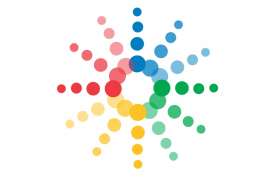Internet of things

The definition of the Internet of things has evolved due to the convergence of multiple technologies, real-time analytics, machine learning, commodity sensors, and embedded systems. Traditional fields of embedded systems, wireless sensor networks, control systems, automation (including home and building automation), and others all contribute to enabling the Internet of things. In the consumer market, IoT technology is most synonymous with products pertaining to the concept of the "smart home", covering devices and appliances (such as lighting fixtures, thermostats, home security systems and cameras, and other home appliances) that support one or more common ecosystems, and can be controlled via devices associated with that ecosystem, such as smartphones and smart speakers.
The IoT concept has faced prominent criticism, especially in regards to privacy and security concerns related to these devices and their intention of pervasive presence.
The concept of a network of smart devices was discussed as early as 1982, with a modified Coke vending machine at Carnegie Mellon University becoming the first Internet-connected appliance, able to report its inventory and whether newly loaded drinks were cold or not. Mark Weiser's 1991 paper on ubiquitous computing, "The Computer of the 21st Century", as well as academic venues such as UbiComp and PerCom produced the contemporary vision of the IoT. In 1994, Reza Raji described the concept in IEEE Spectrum as "[moving] small packets of data to a large set of nodes, so as to integrate and automate everything from home appliances to entire factories". Between 1993 and 1997, several companies proposed solutions like Microsoft's at Work or Novell's NEST. The field gained momentum when Bill Joy envisioned device-to-device communication as a part of his "Six Webs" framework, presented at the World Economic Forum at Davos in 1999.
The term "Internet of things" was likely coined by Kevin Ashton of Procter & Gamble, later MIT's Auto-ID Center, in 1999, though he prefers the phrase "Internet for things". At that point, he viewed Radio-frequency identification (RFID) as essential to the Internet of things, which would allow computers to manage all individual things.
A research article mentioning the Internet of Things was submitted to the conference for Nordic Researchers in Norway, in June 2002, which was preceded by an article published in Finnish in January 2002. The implementation described there was developed by Kary Främling and his team at Helsinki University of Technology and more closely matches the modern one, i.e. an information system infrastructure for implementing smart, connected objects.
Defining the Internet of things as "simply the point in time when more 'things or objects' were connected to the Internet than people", Cisco Systems estimated that the IoT was "born" between 2008 and 2009, with the things/people ratio growing from 0.08 in 2003 to 1.84 in 2010.
